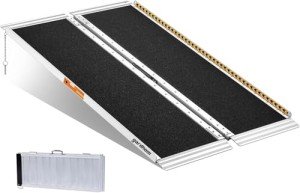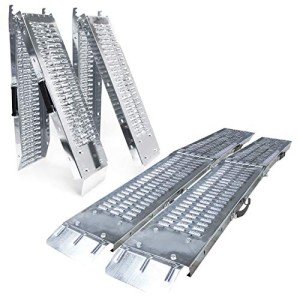
Movable Wheelchair Ramps
Add a review FollowOverview
-
Founded Date September 2, 2007
-
Sectors In-Home Tutoring
-
Posted Jobs 0
-
Viewed 29
Company Description
“The Wheel Chair Ramp Awards: The Most Stunning, Funniest, And Weirdest Things We’ve Ever Seen

Understanding Wheelchair Ramps: A Comprehensive Guide
In today’s world, accessibility is not just a legal requirement however a fundamental element of living with dignity and self-reliance. Amongst the key parts assisting in access for those with mobility challenges is the wheelchair ramp. This necessary structure can be found in different places, consisting of homes, public buildings, and parks. This blog post will take a deep dive into the kinds of wheelchair ramps, their advantages, setup considerations, and maintenance.
What is a Wheelchair Ramp?
A wheelchair ramp is a sloped surface or structure that permits people who utilize wheelchairs, scooters, or other mobility gadgets to browse physical barriers such as steps, curbs, and even uneven surface. The primary goal of a wheelchair ramp is to provide a smooth shift from one level to another, ultimately promoting independence for individuals with mobility obstacles.
Types of Wheelchair Ramps
Wheelchair ramps been available in various designs, each created for particular needs and environments. The following table summarizes typically utilized types of ramps:
| Type of Ramp | Description | Finest Use Cases |
|---|---|---|
| Permanent Ramps | Constructed into the structure utilizing wood, concrete, or metal | Homes, business structures, public facilities |
| Portable Ramps | Lightweight and foldable, typically made from aluminum | Temporary requirements, travel, and events |
| Threshold Ramps | Small ramps developed for entrances and shifts | Homes, little steps, and doors |
| Modular Ramps | Pre-fabricated areas that can be put together and customized | Long-term accessibility services |
| Wheelchair Lifts | Vertical platform lifts set up in small spaces | Tight spaces, multi-story structures |
Benefits of Wheelchair Ramps
Buying wheelchair ramps offers many benefits, not only for the user but likewise for society as a whole. Consider the following benefits:
-
Independence: Ramps empower individuals with mobility challenges to access their environments freely without relying on others for support.
-
Security: Properly designed ramps reduce the risk of mishaps and injuries that may occur with stairs and uneven surface areas.
-
Increased Accessibility: Wheelchair ramps make locations like organizations, parks, and homes more accessible to everybody, including individuals with temporary disabilities, moms and dads with strollers, and elderly people.
-
Improved Quality of Life: Accessible spaces contribute to social inclusion, improving the general lifestyle for individuals with mobility issues.
-
Compliance with Laws and Regulations: Installing ramps ensures compliance with the Americans with Disabilities Act (ADA) and other local ease of access laws.
Installation Considerations
Developing a wheelchair ramp requires mindful preparation and execution. Below is a list of important factors to think about:
-
Slope Ratio: The advised slope for wheelchair ramps is 1:12 (for every inch of vertical rise, there should be at least 12 inches of ramp length). A steeper slope can be unsafe for users.
-
Materials: Choose suitable materials based upon the type of ramp you need. Choices include dealt with wood, aluminum, and concrete, each having its benefits and drawbacks.
-
Width: A ramp needs to be at least 36 inches wide to accommodate a typical wheelchair comfortably.
-
Landing Areas: Level landings are required at the top and bottom of the ramp, permitting users to maneuver securely.
-
Surface Texture: The ramp’s surface ought to supply appropriate grip, especially in rainy or snowy weather condition.
-
Regional Codes and Permits: Check local regulations relating to ramp installations, as authorizations might be needed.
Upkeep of Wheelchair Ramps
To make sure a wheelchair ramp stays safe and functional, routine upkeep is necessary. Think about the following ideas for upkeep:
-
Check for Wear and Tear: Periodically check the ramp for signs of damage, such as fractures, damaged boards, or rust.

-
Keep Clean: Remove debris, snow, and ice to preserve a safe surface.
-
Repair work Promptly: Fix any damage right away to prevent accidents.
-
Strengthen if Needed: As the ramp ages, think about reinforcing locations that might need additional support.
Often Asked Questions (FAQs)
1. Do I need an authorization to set up a wheelchair ramp?
While norms can differ based on your place, it’s constantly best practice to examine local building regulations and obtain an authorization if needed.
2. What is the optimum slope for a wheelchair ramp?
The ADA recommends an optimum slope of 1:12 for wheelchair ramps. For shorter ramps (less than 30 inches increase), a slope of 1:10 is permissible.
3. How large should a wheelchair ramp be?
A basic wheelchair ramp should be at least 36 inches broad.
4. Are portable ramps safe?
Yes, as long as they are built correctly and utilized according to the maker’s guidelines. Constantly guarantee they are steady before use.
5. What products are best for wheelchair ramps?
Common materials consist of dealt with wood, aluminum, and concrete. The option depends upon the ramp’s intended use and budget plan.
6. Can wheelchair ramps be installed indoors?
Yes, wheelchair ramps can be set up inside your home, particularly in multi-story structures or homes with steps.
Wheelchair ramps play an important role in facilitating access and promoting self-reliance for individuals with mobility challenges. Their advantages extend beyond the specific to enhance community inclusiveness and security. Understanding the various kinds of ramps, setup considerations, and the significance of maintenance can empower individuals and caretakers to make informed decisions. Whether you are considering setting up a ramp at your home, office, or any common area, purchasing ease of access is an action toward a more inclusive society.


